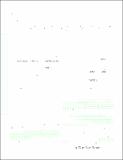Por favor, use este identificador para citar o enlazar a este item:
http://hdl.handle.net/10261/113178COMPARTIR / EXPORTAR:
 SHARE
BASE SHARE
BASE
|
|
| Visualizar otros formatos: MARC | Dublin Core | RDF | ORE | MODS | METS | DIDL | DATACITE | |

| Título: | OH+in astrophysical media: State-to-state formation rates, einstein coefficients and inelastic collision rates with He |
Autor: | Gómez Carrasco, Susana CSIC ORCID CVN; Godard, Benjamin CSIC; Lique, François; Bulut, Niyazi; Kłos, Jacek; Roncero, Octavio CSIC ORCID ; Aguado, Alfredo CSIC ORCID; Aoiz, F. Javier CSIC ORCID; Castillo, Jesús F.; Goicoechea, Javier R. CSIC ORCID; Etxaluze, Mireya; Cernicharo, José CSIC ORCID | Palabras clave: | Astrochemistry ISM: molecules Methods: laboratory: molecular Molecular processes Photon-dominated region (PDR) |
Fecha de publicación: | 19-may-2014 | Editor: | American Astronomical Society | Citación: | Astrophysical Journal 794 (2014) | Resumen: | © 2014 The American Astronomical Society. All rights reserved. The rate constants required to model the OH+observations in different regions of the interstellar medium have been determined using state of the art quantum methods. First, state-to-state rate constants for the H2(v = 0, J = 0, 1) + O+(4S) → H + OH+(X 3Σ-, v′, N) reaction have been obtained using a quantum wave packet method. The calculations have been compared with time-independent results to assess the accuracy of reaction probabilities at collision energies of about 1 meV. The good agreement between the simulations and the existing experimental cross sections in the 0.01-1 eV energy range shows the quality of the results. The calculated state-to-state rate constants have been fitted to an analytical form. Second, the Einstein coefficients of OH+have been obtained for all astronomically significant rovibrational bands involving the X 3Σ-and/or A 3Π electronic states. For this purpose, the potential energy curves and electric dipole transition moments for seven electronic states of OH+are calculated with ab initio methods at the highest level, including spin-orbit terms, and the rovibrational levels have been calculated including the empirical spin-rotation and spin-spin terms. Third, the state-to-state rate constants for inelastic collisions between He and OH+(X 3Σ-) have been calculated using a time-independent close coupling method on a new potential energy surface. All these rates have been implemented in detailed chemical and radiative transfer models. Applications of these models to various astronomical sources show that inelastic collisions dominate the excitation of the rotational levels of OH+. In the models considered, the excitation resulting from the chemical formation of OH+increases the line fluxes by about 10% or less depending on the density of the gas. | Descripción: | 16 pags.; 11 figs.; 6 tabs.; 4 apps. | Versión del editor: | http://dx.doi.org/10.1088/0004-637X/794/1/33 | URI: | http://hdl.handle.net/10261/113178 | DOI: | 10.1088/0004-637X/794/1/33 | Identificadores: | doi: 10.1088/0004-637X/794/1/33 issn: 1538-4357 |
| Aparece en las colecciones: | (CFMAC-IFF) Artículos (ICMM) Artículos |
Ficheros en este ítem:
| Fichero | Descripción | Tamaño | Formato | |
|---|---|---|---|---|
| OH.pdf | 481,81 kB | Adobe PDF |  Visualizar/Abrir |
CORE Recommender
Page view(s)
316
checked on 24-abr-2024
Download(s)
213
checked on 24-abr-2024
Google ScholarTM
Check
Altmetric
Altmetric
NOTA: Los ítems de Digital.CSIC están protegidos por copyright, con todos los derechos reservados, a menos que se indique lo contrario.
